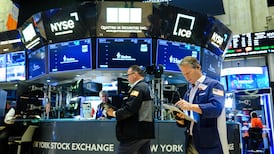Shares in online fashion retailer Boohoo fell as much as 20 per cent as the company warned that expectations for its 2021-22 year will be lower than previously guided, blaming higher return rates, disruption to international deliveries and pandemic-related cost inflation.
The group, which sells clothing, shoes, accessories and beauty products aimed at 16 to 40-year olds, said it now expected net sales growth to be 12 per cent to 14 per cent, compared to previous guidance of 20 per cent to 25 per cent.
Adjusted earnings before interest, tax, depreciation and amortisation (EBITDA) margin for the year was expected to be 6 per cent to 7 per cent, compared to previous guidance of 9 per cent to 9.5 per cent, implying adjusted EBITDA of between £117 million (€137.4 million) and £139 million.
Delivery times
“This is due to significantly higher returns rates impacting net sales growth and costs, with continued extended delivery times impacting international demand, consequently driving lower returns on marketing expenditure, and significant ongoing pandemic-related inbound freight cost inflation,” it said.
Updating on trade for the three months to November 30th, Boohoo said gross demand had exceeded that achieved in each of the first and second quarters of the financial year ending February 28th 2022.
It said gross sales were up 28 per cent and net sales were up 10 per cent.
Boohoo said its guidance reflects an expectation that the factors impacting its performance persist through the remainder of the financial year.
It also warned that recent developments surrounding the new coronavirus Omicron variant could pose further demand uncertainty and elevated returns rates particularly in January and February. – Reuters















